Happy Saturday!!!
This week was my first week exploring Ireland, and I’m so excited to start sharing more once I get settled into school. For now, I wanted to share a little gallery of the eats so far, I'll drop that below before we get into today’s topic!
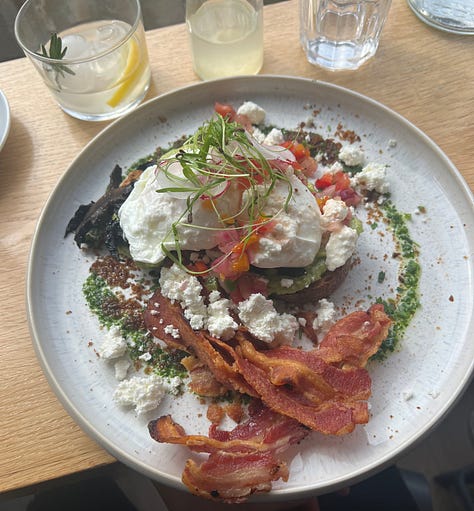
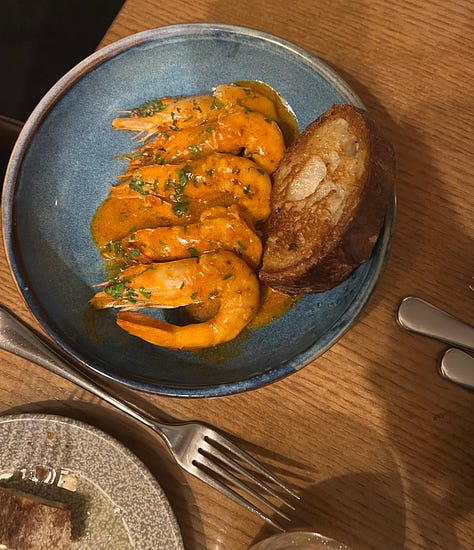
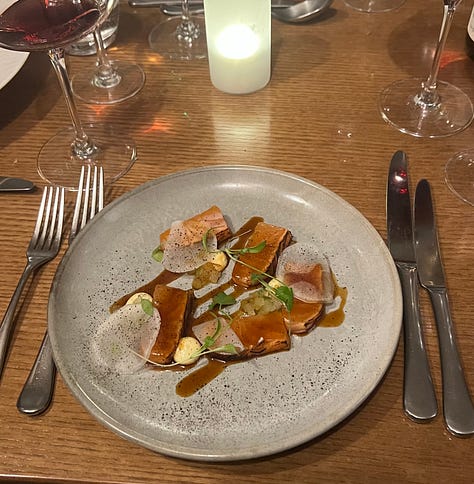
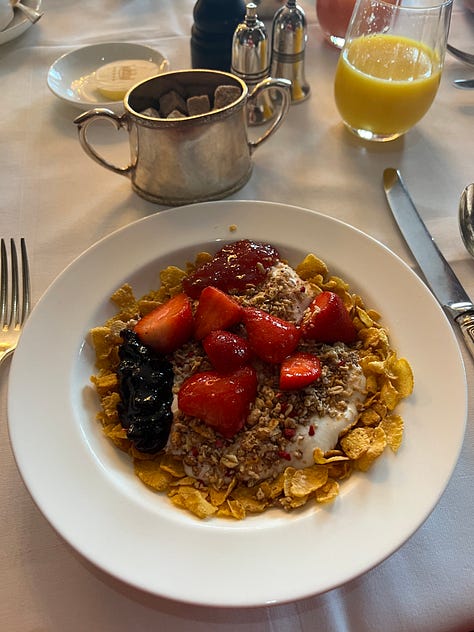
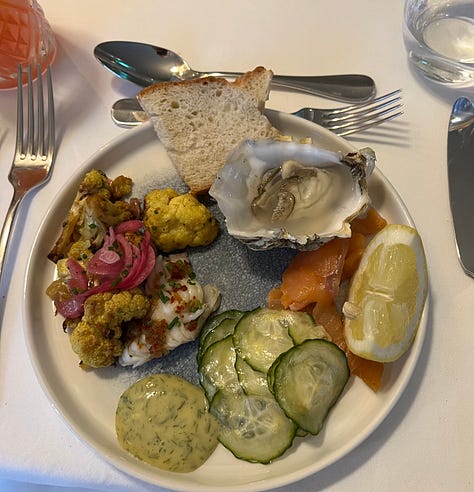
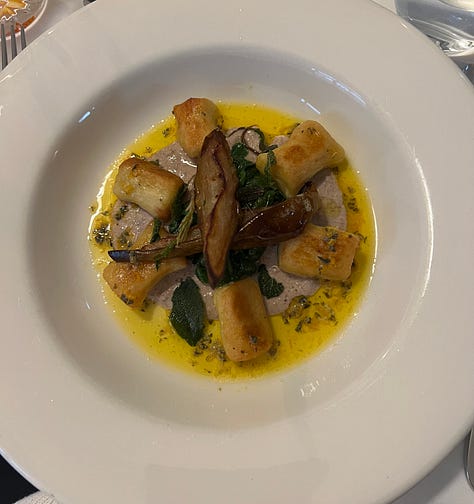
Let’s talk about frying.
With all the controversy surrounding frying and whether it’s worth it, especially for home cooks, I’d like to share my perspective on making the most of it. There truly is nothing better than good fried chicken or a perfectly balanced cutlet that’s juicy on the inside and crispy and golden on the outside. And let’s not forget about sweet potato fries; you simply can’t replicate that perfect taste with oven-baked versions or store-bought options. So, let’s dive in!
In my opinion, frying at home is completely worth it. You gain several advantages: you can control the type of oil you use, choose your ingredients for the breading or batter, and have delicious fried food at your fingertips whenever you want. The next question is how to fry at home in a way that makes cleanup easy and the process worthwhile. Here are my top three tips:
Prepare Your Station: Set up your mise en place meticulously. Have your egg, flour, and breadcrumb trays ready, along with any batter bowls you’re using. Line one sheet tray for pre-frying and another for the finished product. I prefer to line them with foil followed by parchment for super easy cleanup, definitely a must when frying at home.
Choose the Right Pot: Use a pot with high walls to minimize oil splatter.
Heat the Oil Gradually: Bring the oil up to temperature slowly over low heat.
Now, let’s talk about my go-to frying method for chicken cutlets or fillets of fish. Traditionally, canola or vegetable oil is recommended for frying due to their neutral flavor and accessibility. While olive oil is also an option, it can be pricey and impart a flavor that may not suit every dish. As people move away from highly processed oils, my personal favorite has become avocado oil. It has a high smoke point, a neutral flavor, and is less inflammatory.
Alternatively, beef tallow or duck fat can elevate your frying game. Duck fat, in particular, is fantastic; I sometimes mix it with avocado oil for a perfect combination of flavors, especially for potatoes.
Now, let’s talk breading. While the classic method uses an egg–flour–breadcrumb lineup, I encourage you to experiment with potato starch. It creates an impossibly thin and crispy outer layer that’s much lighter than traditional flour-based breading. Plus, it’s naturally gluten-free, great for anyone avoiding gluten. Set up your breading station with egg in one tray and potato starch in another. Start by coating your ingredient in the egg to give the starch something to cling to. It’s also crucial that you season your starch. Spices like garlic powder, onion powder, paprika, parsley, oregano, and more can deepen the flavor of whatever you’re frying. The exact spices you use will depend on the dish, but one rule always applies: never forget lots of salt.
Before you begin, ensure the oil reaches a temperature of 375°F-400°F. Use one hand for keeping dry and the other for the wet egg: pat the meat or fish dry, coat it in whisked egg, then dip it in potato starch using your dry hand for an even coat. Place the breaded pieces on the prepared tray and continue until all are coated.
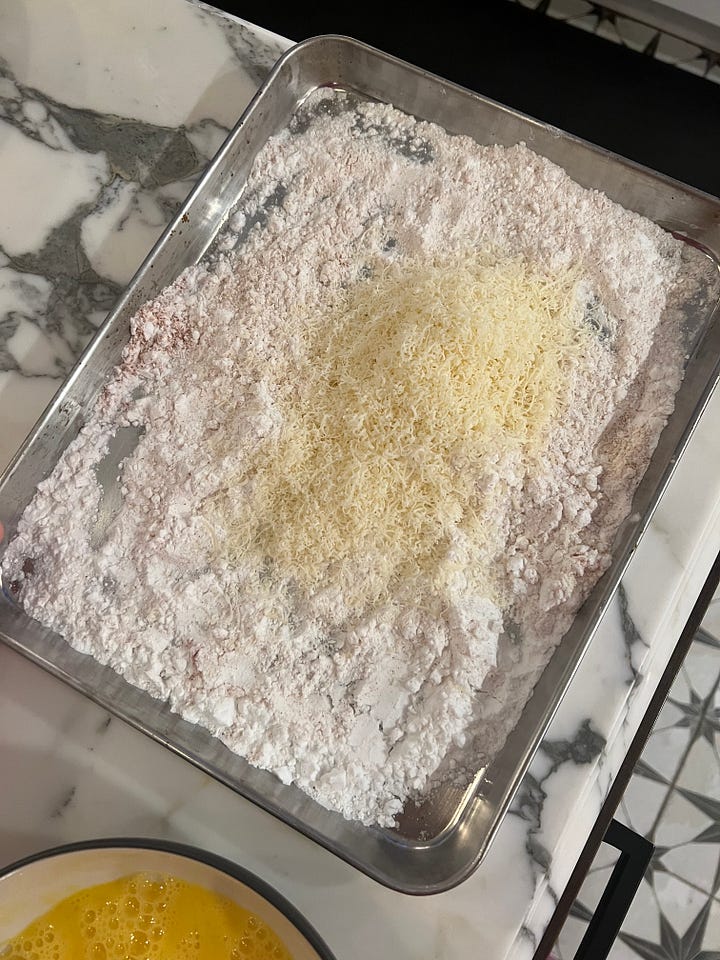
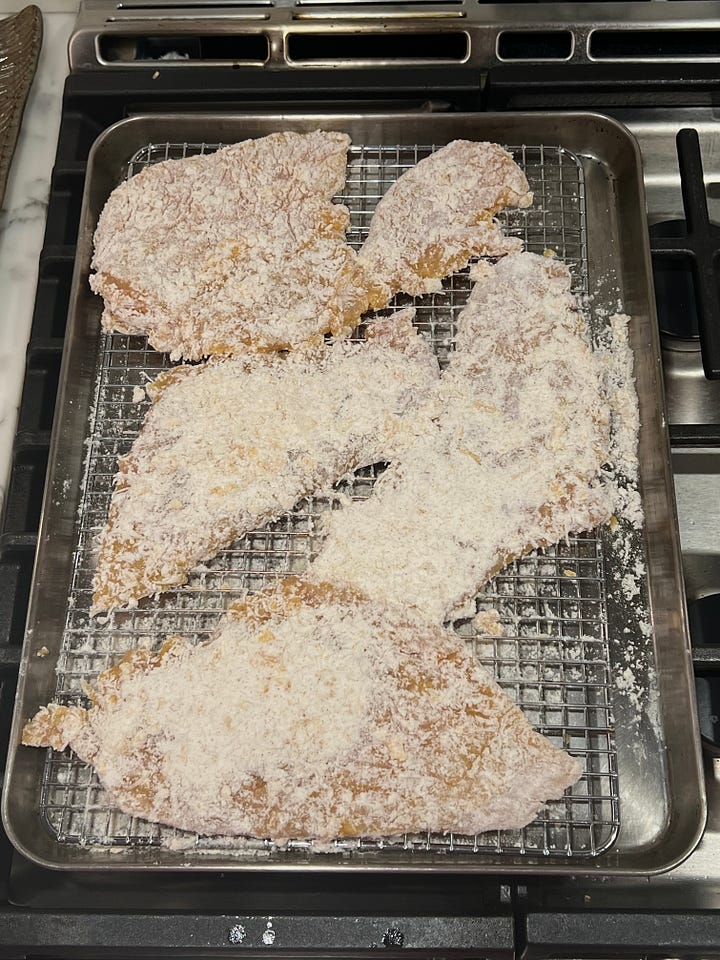
When frying, avoid overcrowding the pot to ensure an even fry and minimize mess. Carefully add 1-3 cutlets to the hot oil, frying until medium golden brown on each side. Once cooked, transfer them to the tray meant for finished items. Maintain the oil temperature between 375°F-400°F, allowing it to return to temp between batches. After frying, turn off the heat and move the pot to a cool part of the stove.
Once you’ve finished frying, you might think, “what a waste of oil” But most people don’t realize you can reuse that oil. Simply pour the cooled oil through a fine mesh sieve to strain out any debris, then store it in a jar or plastic deli container. Keep it in a cool, dry place until you’re ready to fry again. I usually reuse oil 3-4 times, straining it after each use before freezing and discarding the remainder.
I hope this inspires you to tackle the daunting task of frying at home. Enjoy, and as always, we’ll talk soon!
This weeks new recipe
dense pesto salad - a salad perfect for spring and meal prepping, enjoy! ♡
all the best,
ella




